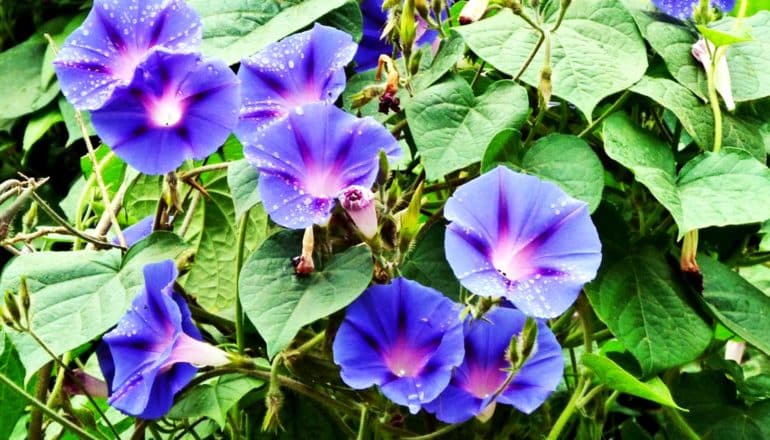
Genome-wide scans identify the source of the common morning glory’s resistance to the herbicide Roundup.
Roundup is the most widely used agricultural chemical in history. But over the past two decades, a growing number of weed species have evolved resistance to Roundup’s active ingredient, glyphosate.
Research on the genetic basis of glyphosate resistance has focused largely on target-site resistance, which involves mutations to the single gene that encodes the plant protein that the herbicide disrupts.
Much less attention has gone to nontarget-site glyphosate resistance, which involves identifying other genes that have mutated in ways that confer resistance to Roundup.
As reported in PLOS Genetics, University of Michigan plant ecological geneticist Regina Baucom and her team identified five regions of the genome that showed strong signs of selection, indicating rapid evolution of resistance. Within these regions, genes that enable the weed to detoxify the herbicide were enriched.
“We show that morning glory exhibits nontarget-site resistance and that detoxification of the herbicide by the plant is a likely resistance mechanism in this species,” says Baucom, associate professor in the department of ecology and evolutionary biology. “Common morning glory has always been problematic to farmers, with some populations more resistant than others. But until now we didn’t know why it was so problematic.
“With this work, we show that there are multiple ways—including detoxification—that a plant may evolve higher levels of resistance to glyphosate. If morning glory is detoxifying glyphosate or the products of glyphosate, it might make other herbicides less likely to work, since they too may be detoxified.
“The next major question is whether selection from glyphosate makes morning glory resistant to other herbicides, and if morning glory is detoxifying the herbicide itself or the oxidative stress caused by damage from the herbicide.”
Overall, the study found evidence for both parallel and nonparallel genetic changes associated with glyphosate resistance in the morning glory, suggesting there are more genetic avenues underlying the adaptation to herbicide than scientists previously considered. In genetic parallelism, separate species or genetic lineages use the same genetic solution in response to selective pressures.
“These findings suggest that resistance in this species is due to a nontarget genetic mechanism, components of which exhibit signs of both parallel and nonparallel responses to selection among populations,” according to the researchers.
Coauthors of the study are from Penn State-Scranton, Columbia University, and the University of Georgia. Funding came from the Department of Agriculture. The university’s Matthaei Botanical Gardens also provided support.
Source: University of Michigan
The post How these pretty weeds resist Roundup appeared first on Futurity.
from Futurity https://ift.tt/371YkMY
No comments:
Post a Comment